Going on a Safari in South Africa
You wake up in the morning, bleary-eyed but alert. The sounds of birds chirping hum in the background; the skies outside are still dark, the leaves of trees shivering slightly in the wind. You get ready as fast as you can, wolf down a hearty breakfast and stride quickly out to the truck that lies in wait.
Two friendly rangers greet you and help you into the truck. You settle down into the warm seat, check to see if you’ve brought your binoculars and wait in eager anticipation – for your first safari game drive is about to begin.

Each game drive aims to spot the ‘Big Five’, also known as the elephant, lion, leopard, rhinoceros and African buffalo. Other than these, you might also spot zebras, giraffes, hyenas, plenty of impalas (a type of antelope) and so on. The animals are all wild in nature and there’s really no telling where they might be – you just have to get out there and find them.
Read: Spotting the Big Five On a Safari in South Africa
Here’s a quick introduction to the animals that you can see on safari:
Elephants
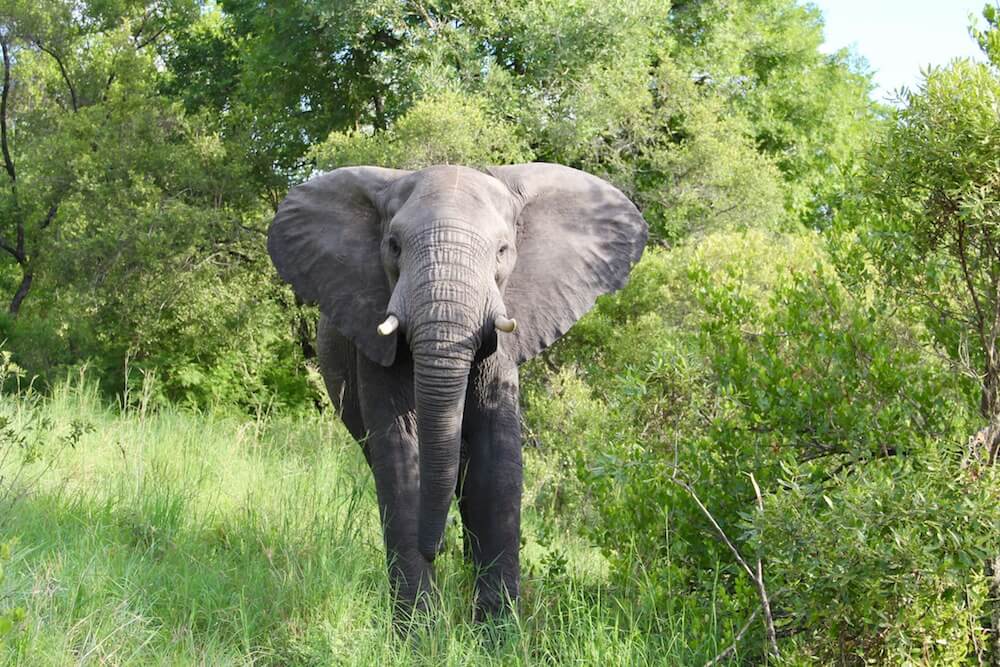

The average African elephant can grow up to 4 metres tall and even weigh more than 5, 000 kilograms. Imagine that!
The females spend most of their lives living in herds led by matriarchs, while the males are often solitary creatures.
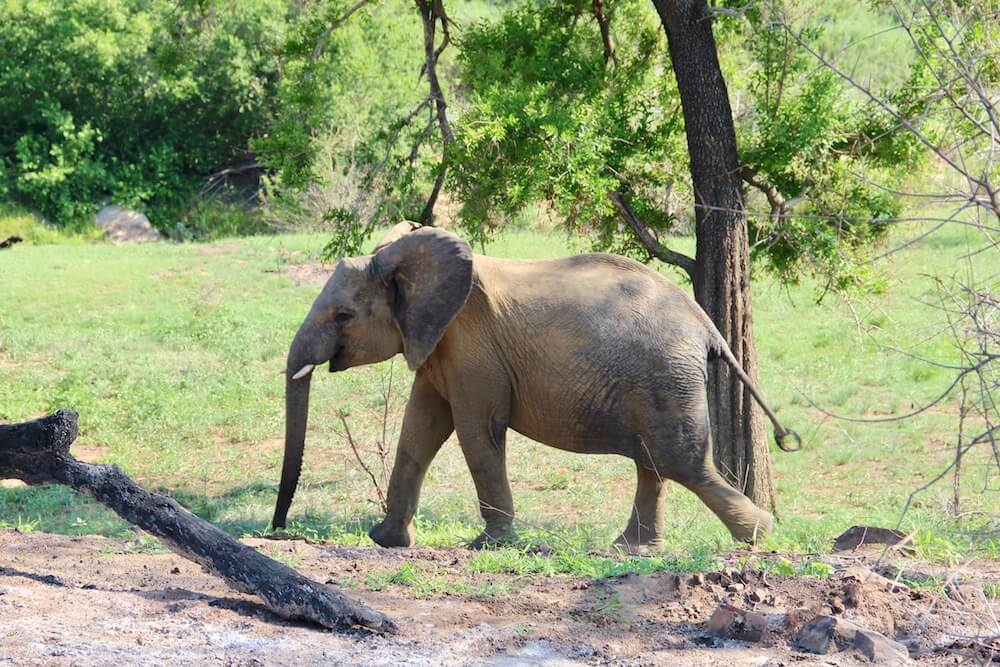
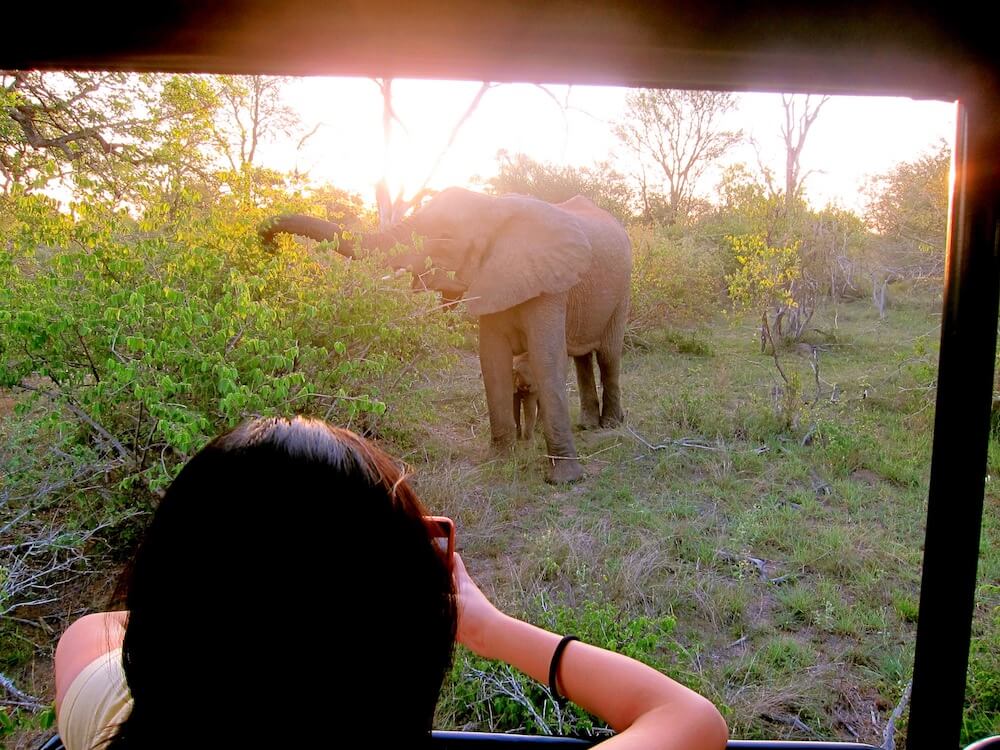
If you’re lucky, you might even meet a curious little baby calf. Look at how close you’ll get to these incredible creatures!
Lions
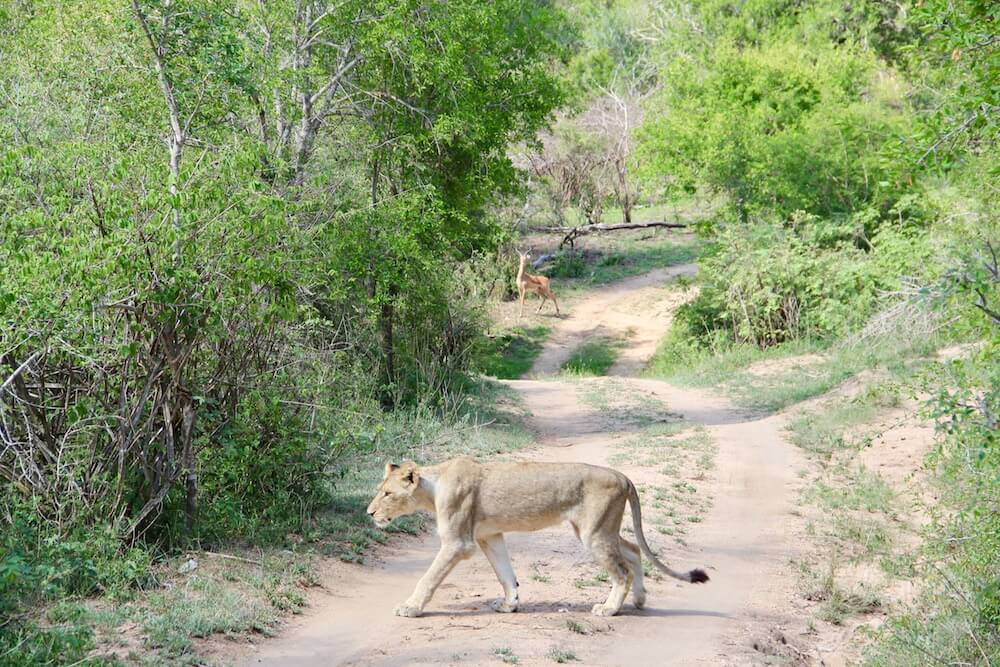
Known as the Kings of the Jungle, lions are formidable creatures that dominate the top of the food chain. Look at the picture and see if you can spot an impala on high alert as a lion crosses the road in front of it!
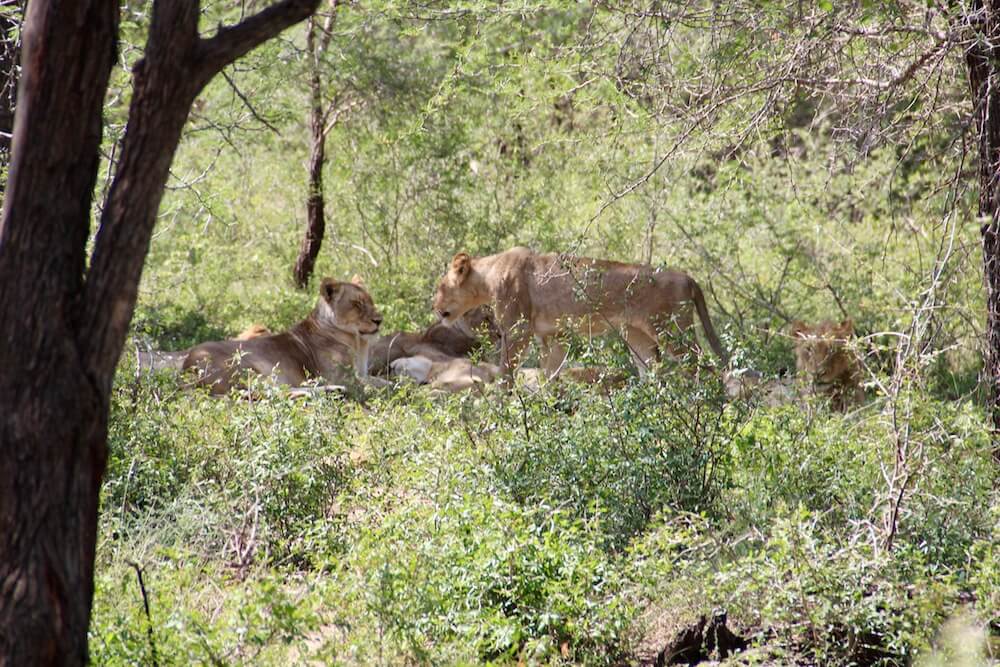
Lions live in groups called prides, which contain significantly more females than males. Males are in charge of protecting the group, whilst the females are designated as the primary hunters.
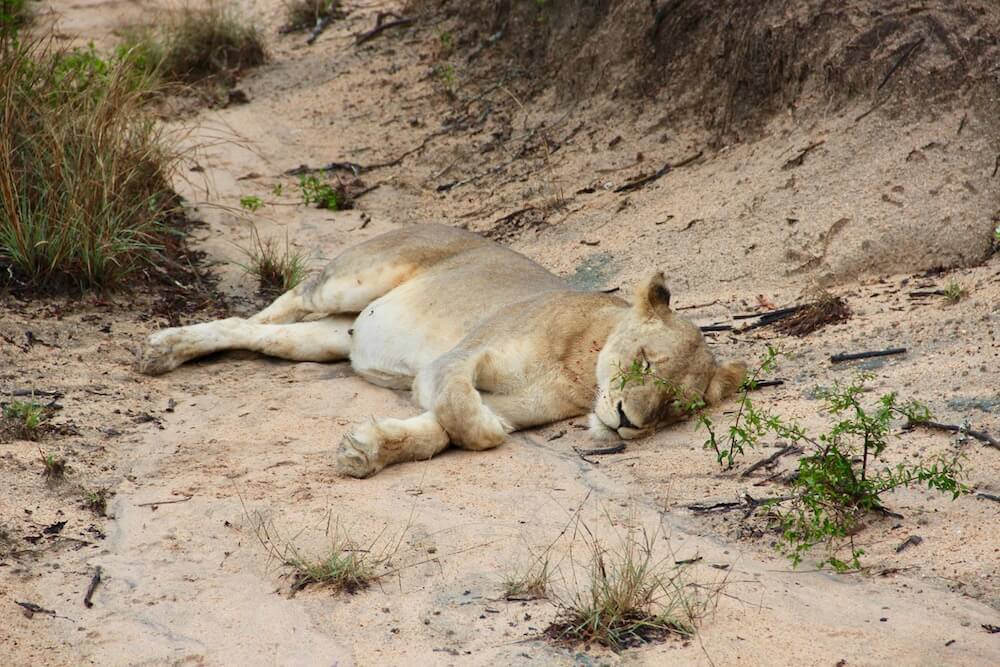
This lion was sleeping peacefully in the middle of the road, its belly swollen from its last kill. If you look closely, you can even spot some specks of blood matted in its fur around its neck area. How’s that for a killer food coma!
Leopards
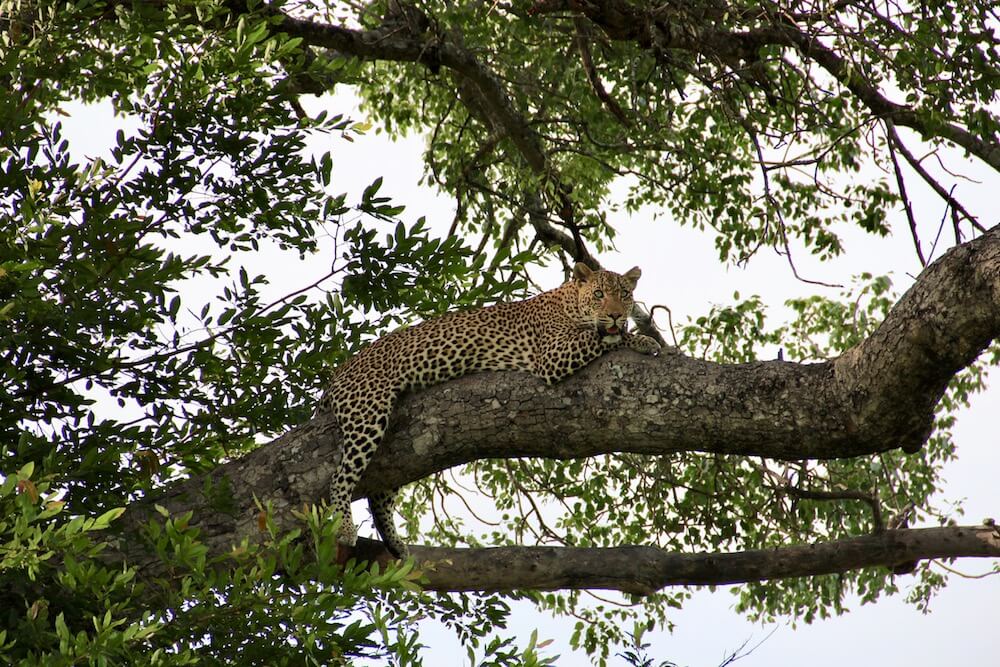
Leopards can run at a speed of up to 58 kilometres per hour and are known to be strong swimmers. Leopards often carry their prey up trees to prevent other scavengers or predators from stealing their catch.
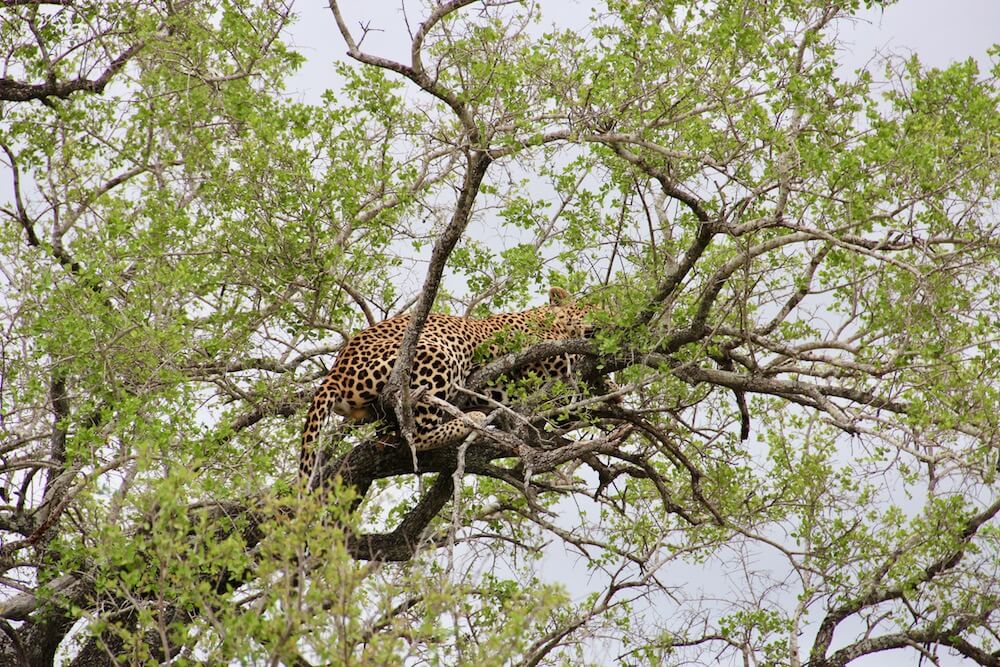
They are known to be the most elusive of the Big Five and are the hardest to spot.
Rhinoceros
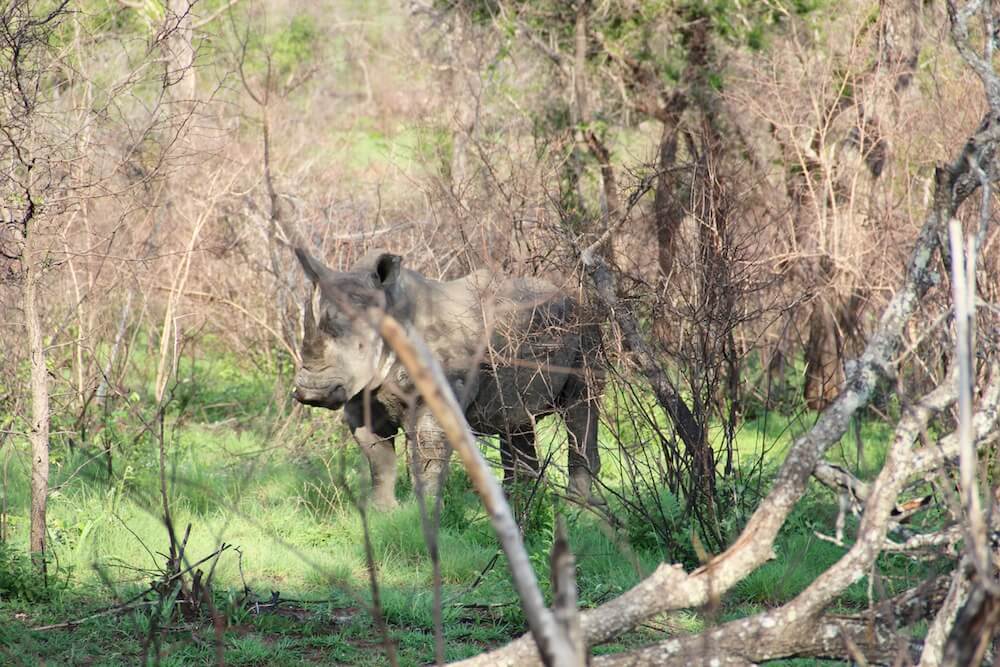
Rhinos are known to have very poor vision, often attacking trees by accident. However, their impaired sight is more than compensated for with their fantastic senses of smell and hearing.
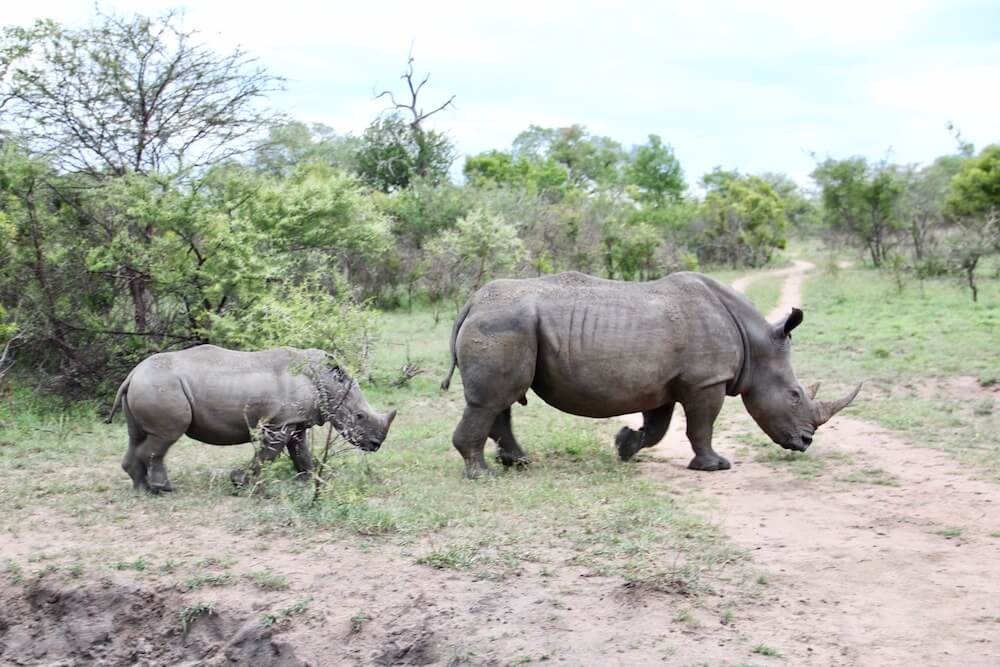
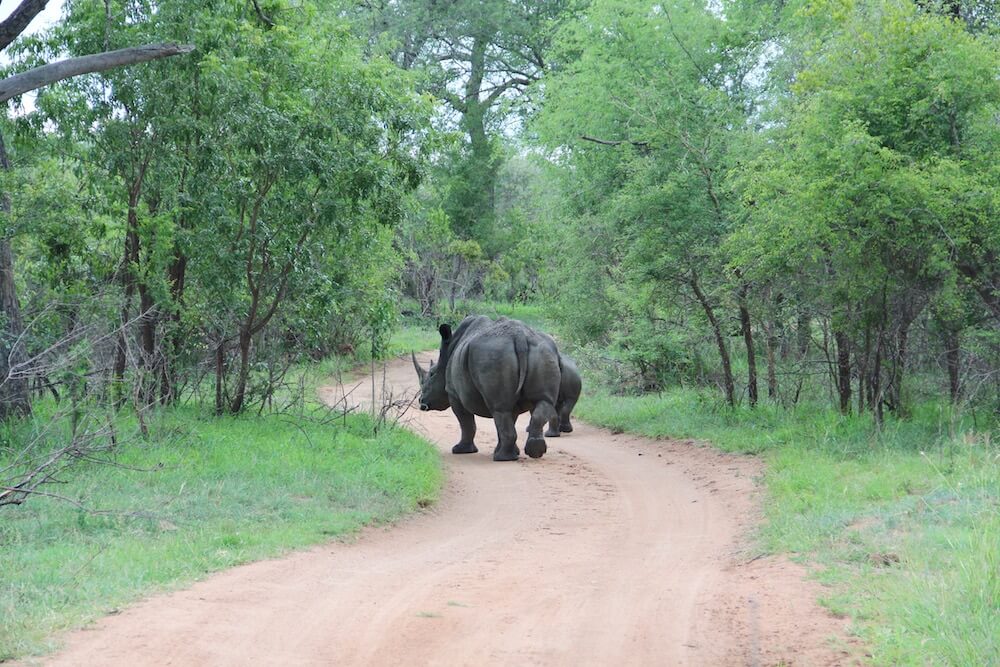
Unfortunately, out of the Big Five, the rhino is the most endangered species. The rhino’s horn is seen as a prized commodity in Asian medicine, where it’s touted as a cure for many ailments. Rhino poachers have also resorted to increasingly sophisticated methods to capture these rhinos, often to high degrees of success.
African Buffaloes
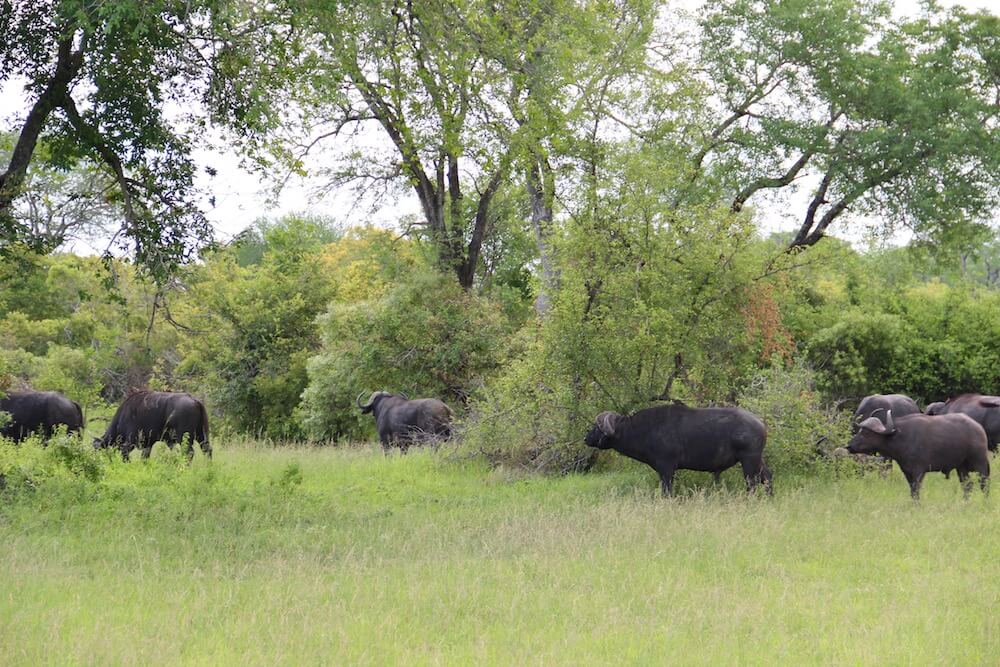
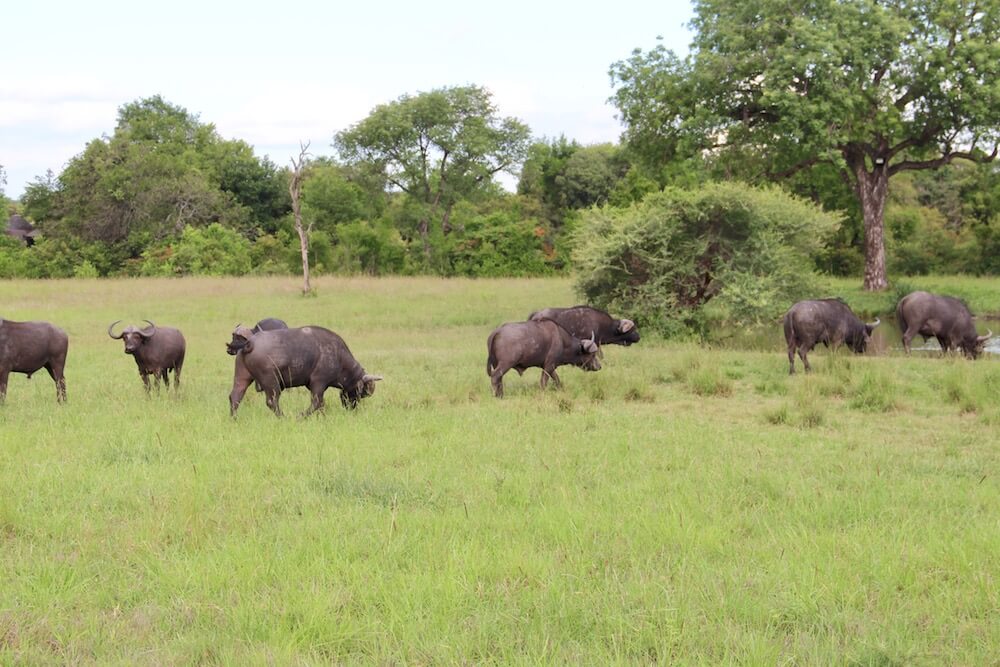
The African buffaloes are normally found in large herds, which helps in discouraging potential predators from attacking. They can be recognised by the distinctive shape of their horns, which curve up past their ears!
Hippopotamuses
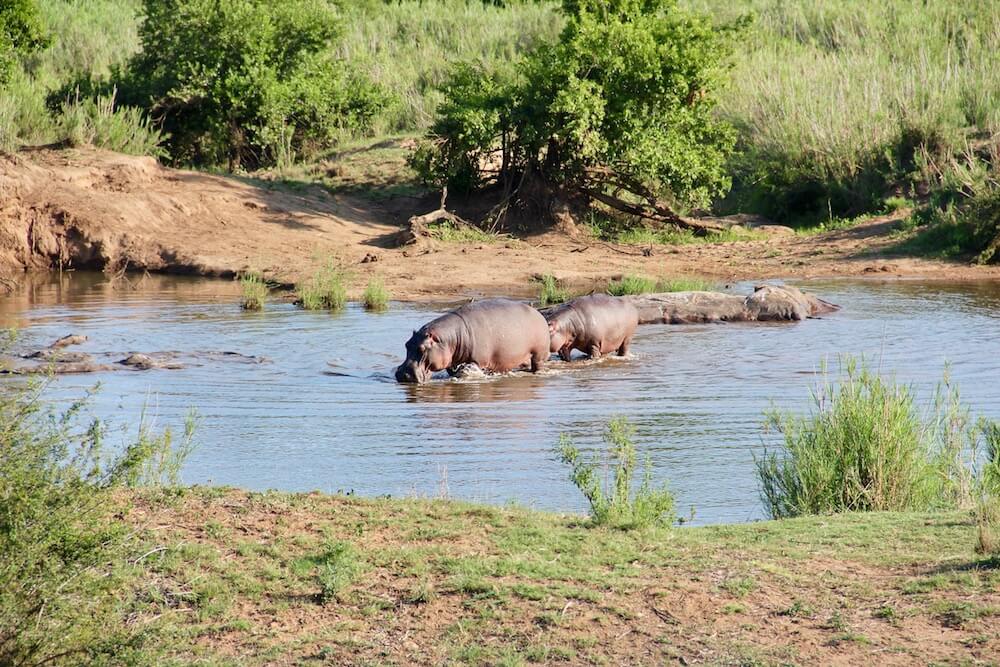
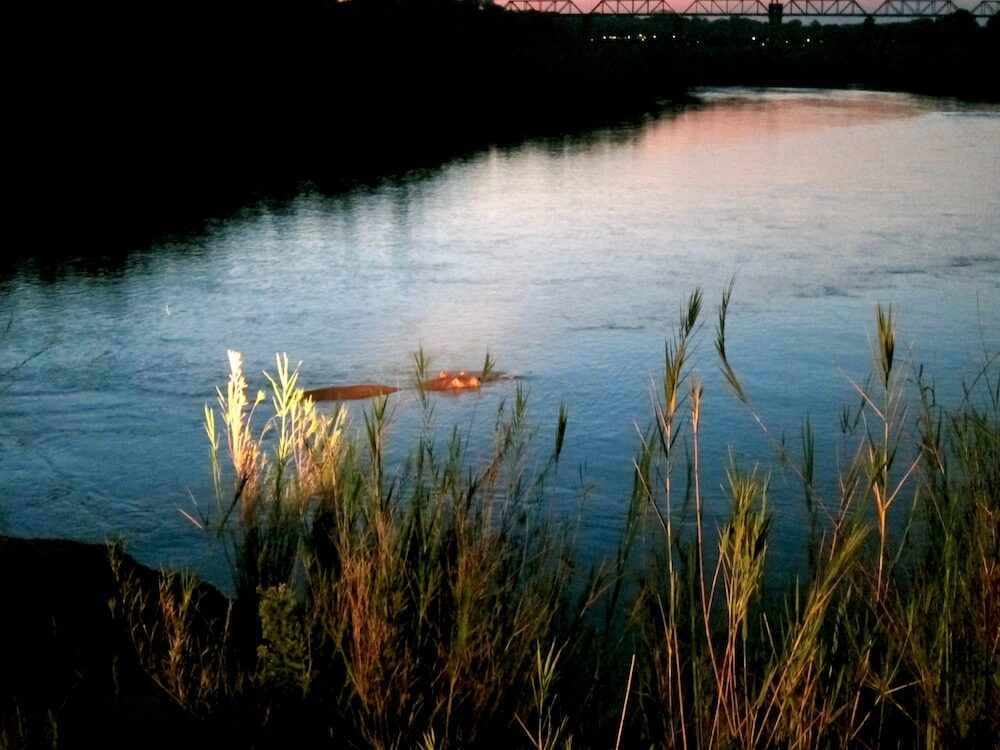
The name ‘Hippopotamus’ is derived from Ancient Greek, and means ‘River Horse’. Hippos are often found in water, only needing to surface every 3 to 5 minutes to breathe. It’s said that hippos can even resurface automatically without waking from their sleep!
Interestingly, the hippos are considered to be one of the most aggressive and dangerous creatures in the world.
Giraffes
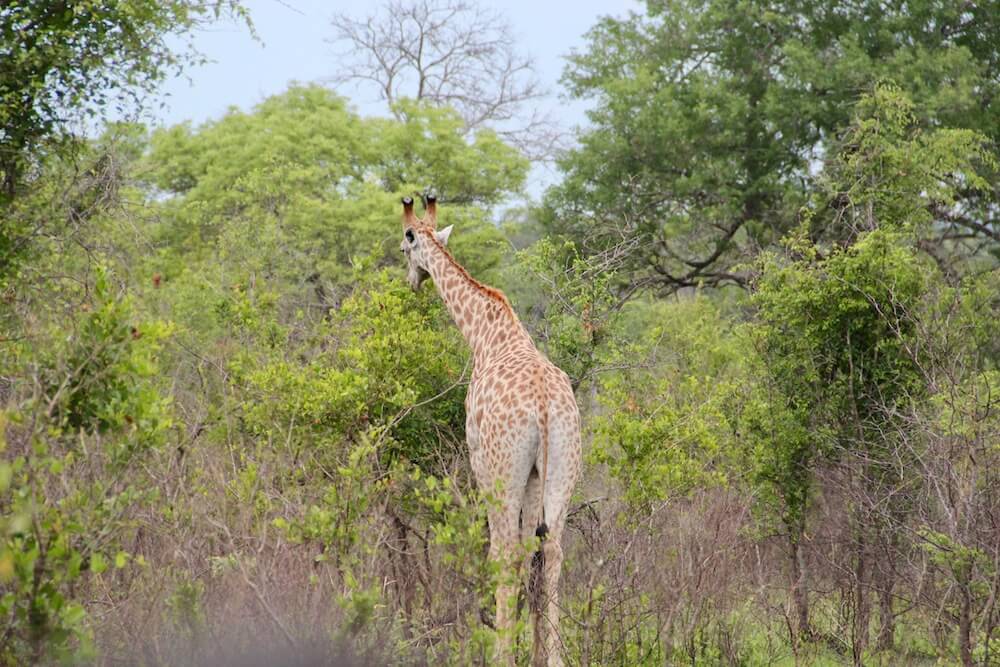
Giraffes are the tallest mammals in the world, often reaching up to 5 metres tall. They spend most of their lives standing up, even when sleeping!
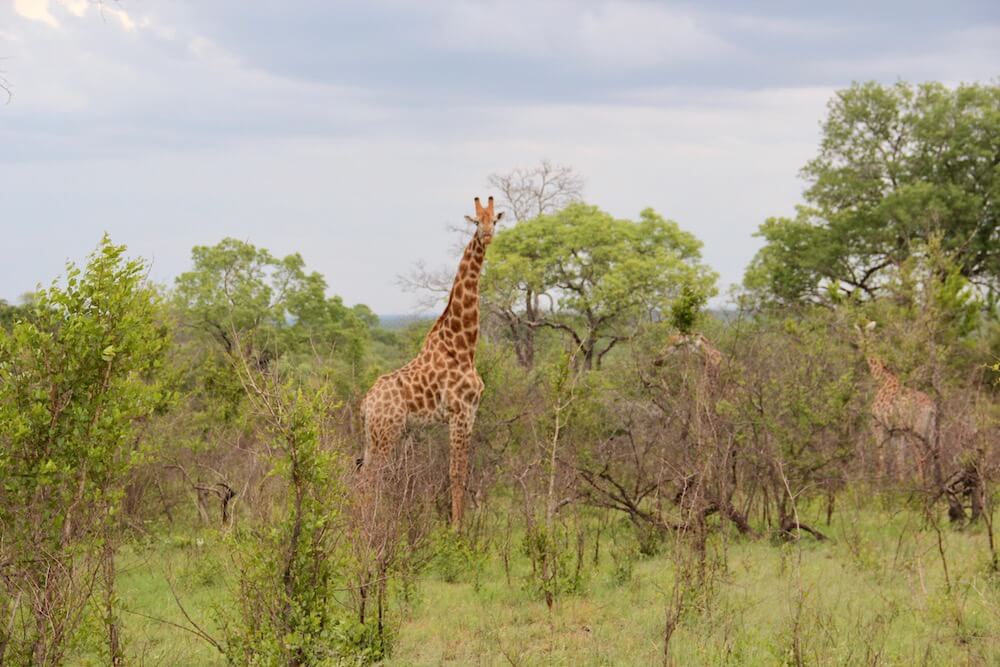
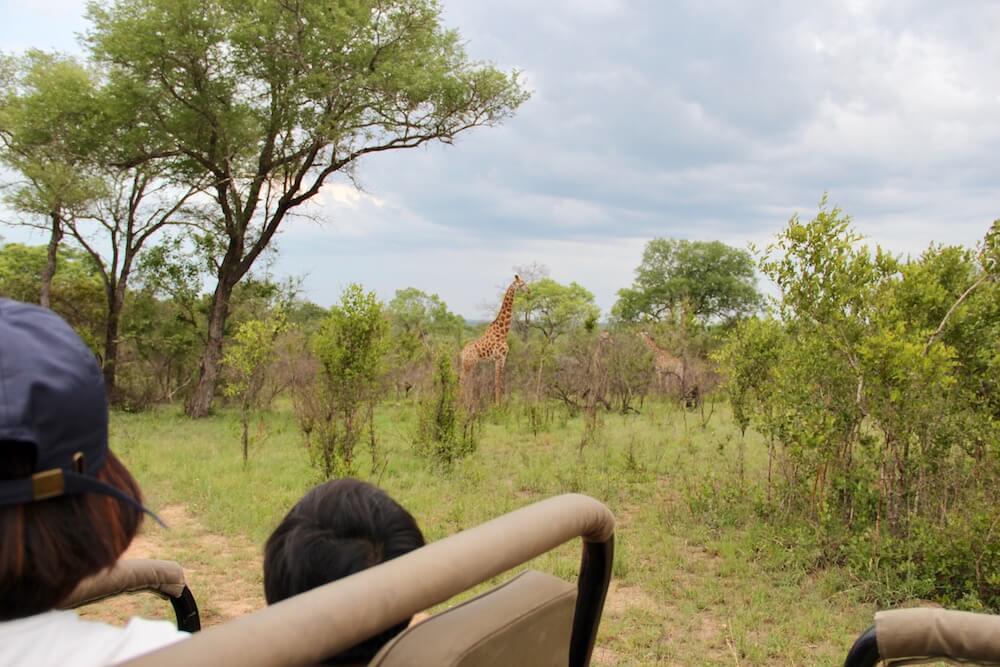
Giraffes are social animals that often live in herds of 10 to 50 animals. Herds are often gender-segregated, with females and their young in one group and the males in their own bachelor herds.
Fun fact: No two giraffes have the same pattern of spots!
Impalas

A type of antelope, the impala is the most common type of prey for predators like leopards or lions. As a result, half of newborn impalas are usually killed within their first few weeks.
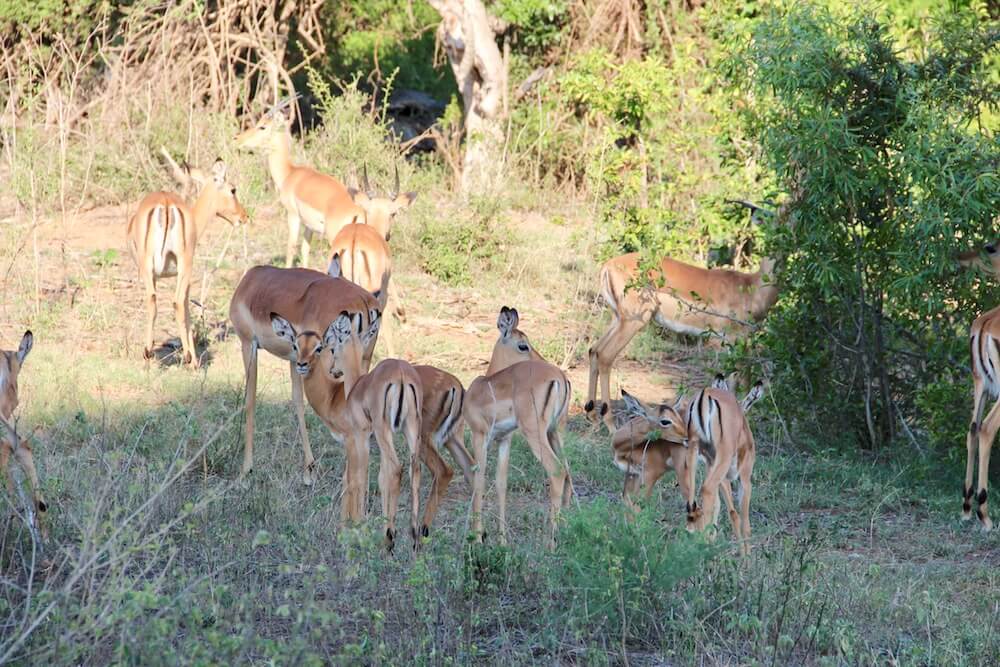
However, they do have a few tactics to help them evade their predators. They’re able to leap a distance of up to 10 metres in length and 3 metres in height. They also live in herds of up to 100 creatures; when attacked, the impalas scatter and leap in all directions in a bid to confuse the predator. The impalas are constantly on high alert and always on the lookout of danger, aided by their keen senses of smell, sight and hearing.
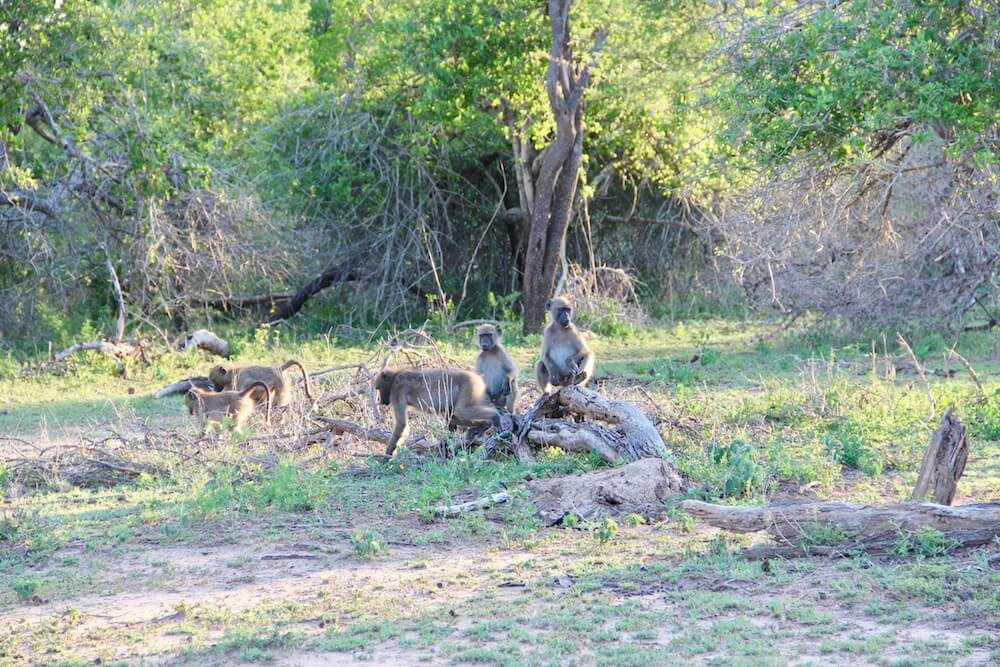
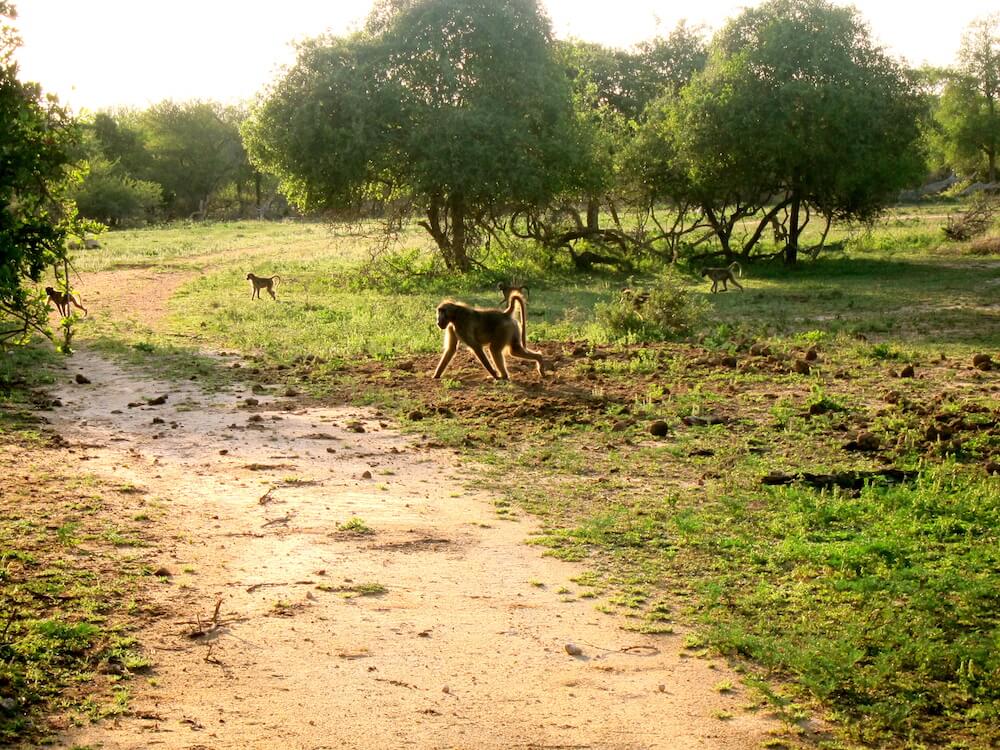

Other than the big animals, you might also spot a couple of monkeys and even a warthog.
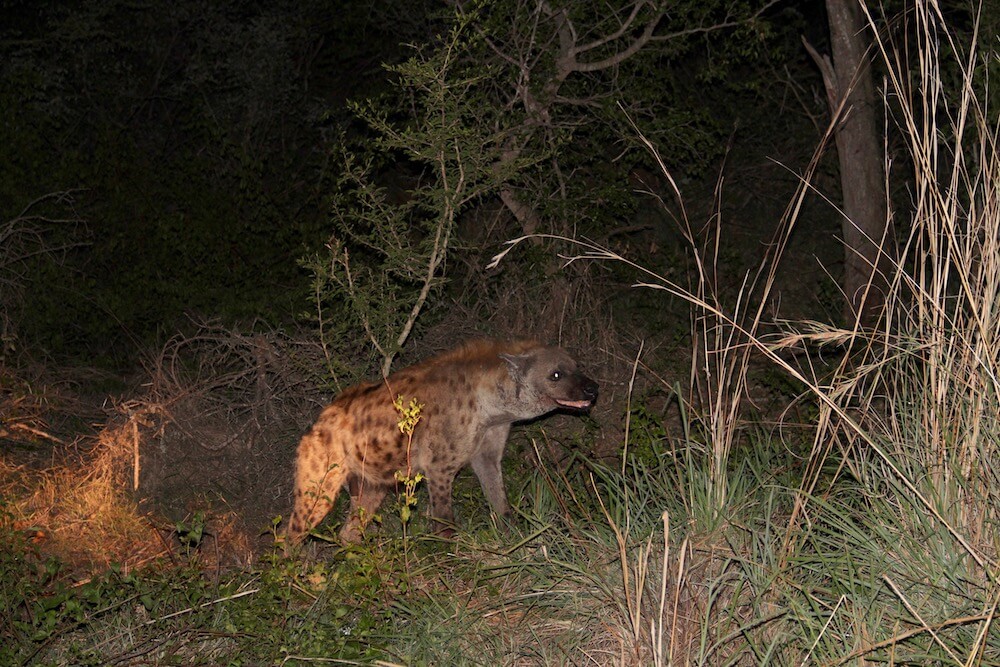
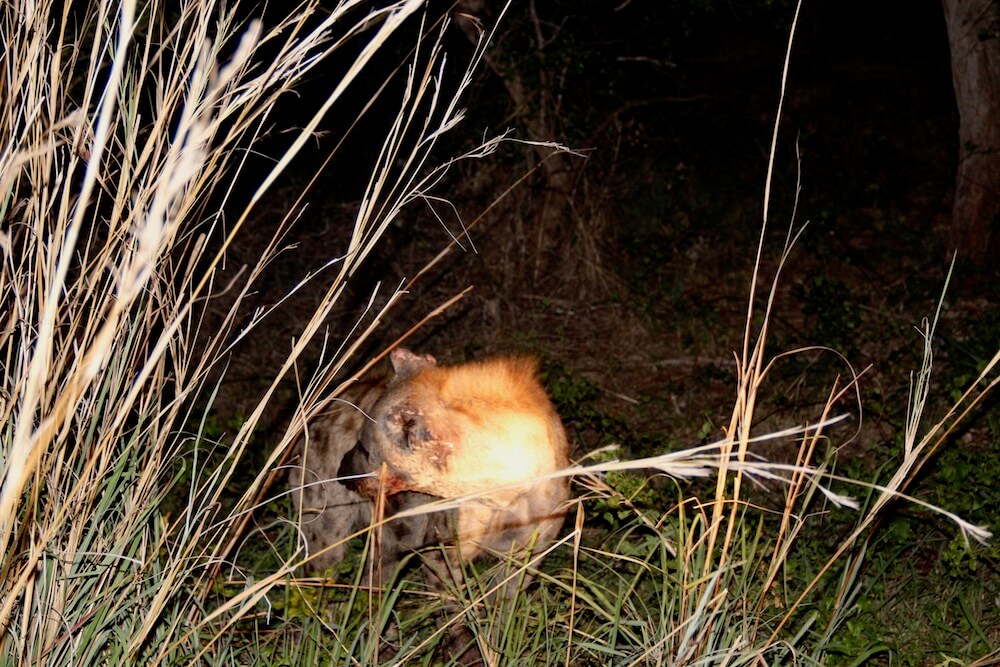
On one of our night drives, we spotted a hyena emerging from the bush. What caught our eye was the blood smeared across its mouth – it seems like the animal was just finishing off its meal!
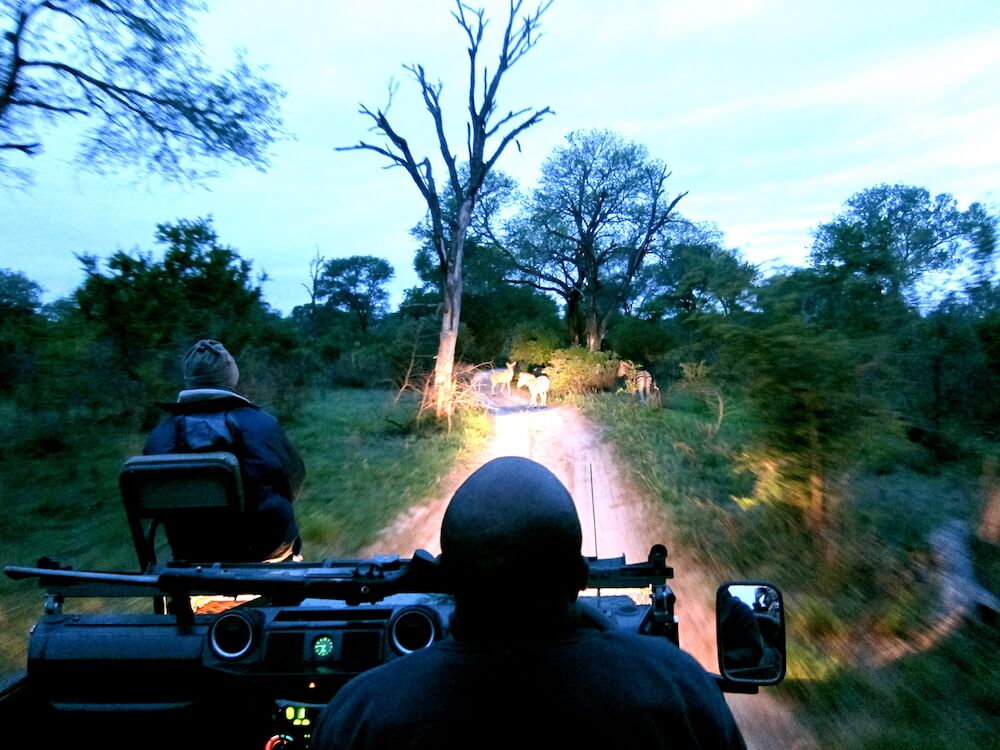

We initially didn’t manage to see any zebras – until we chanced upon a few on our way back from our last drive. Funnily, that’s how a safari works; there’s no use hoping to see a specific type of animal, they’ll usually pop into sight when you least expect it!
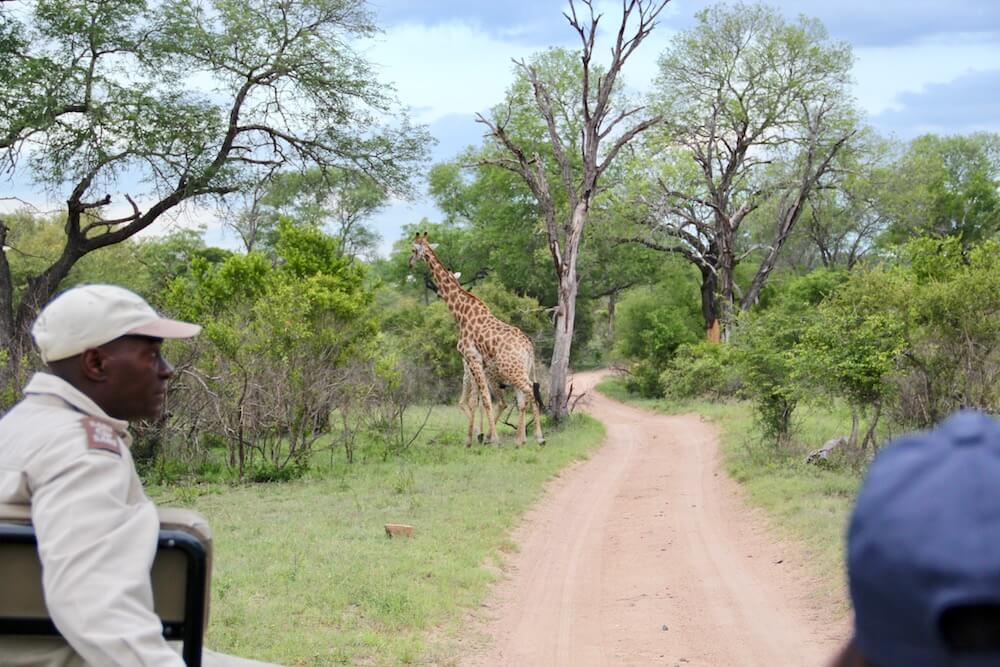
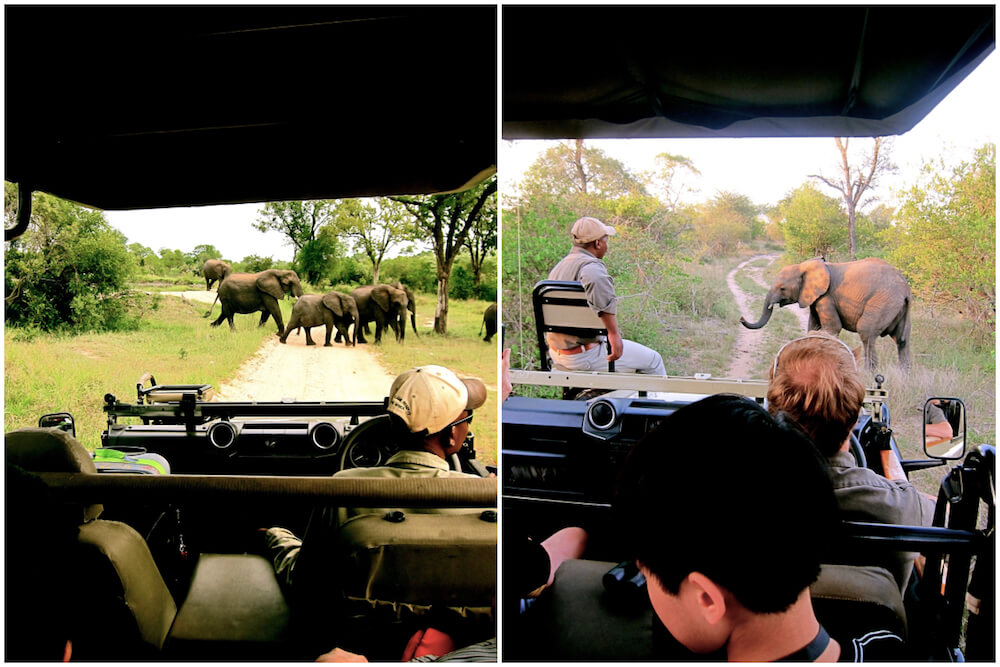
It’s also highly amusing how many times our truck had to stop to let the animals cross the road ahead of us. They usually took their time to saunter across the road – with all of us gleefully watching from the sidelines!
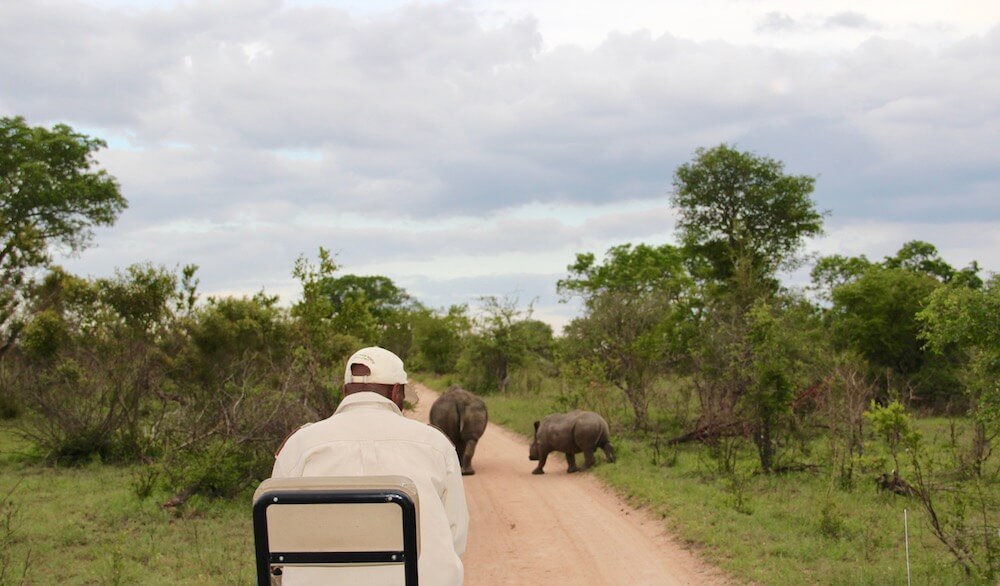
We were always accompanied by two rangers – a driver and one that would sit in a raised seat at the front of the truck. This particular ranger had the job of looking out for animals that were hidden in the trees or brush. Due to years of experience and an incredibly keen trained eye, he was often able to spot animals that we otherwise wouldn’t have seen!
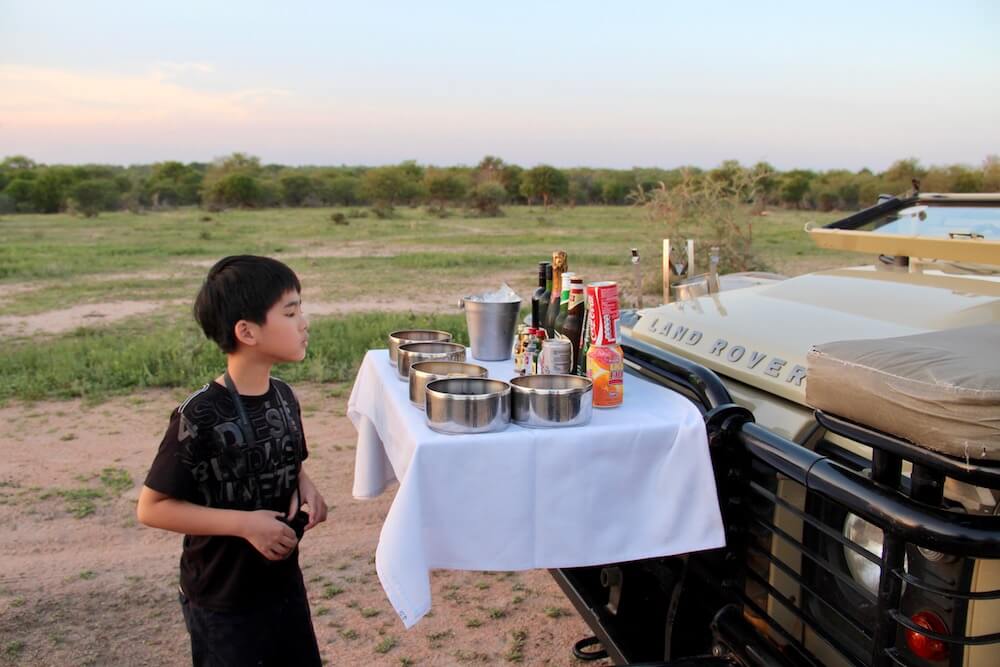
Our rangers were even kind enough to organise a surprise picnic for us halfway through our drive!
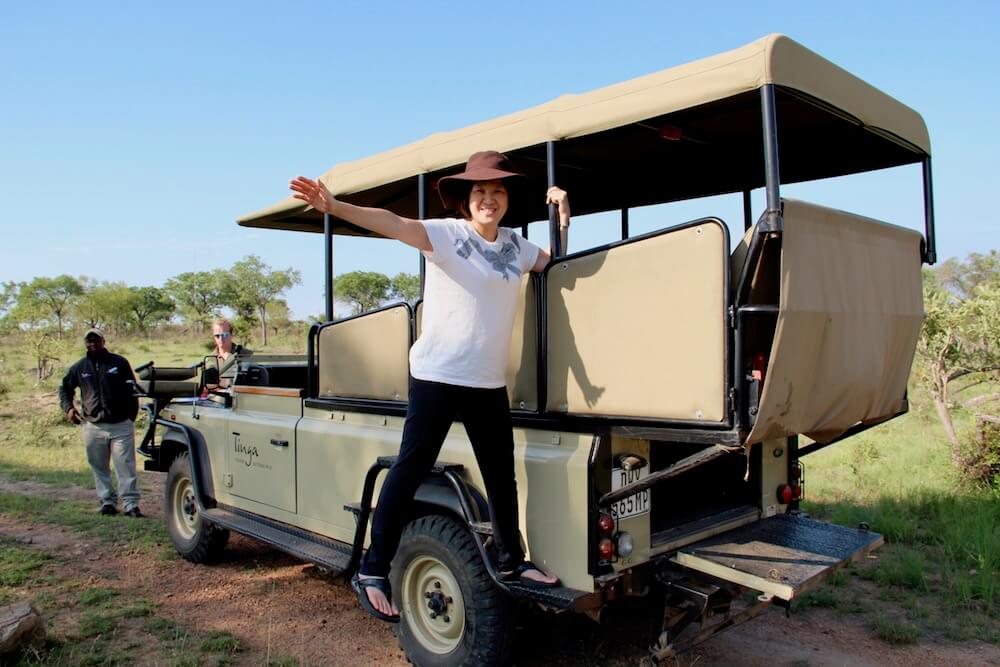
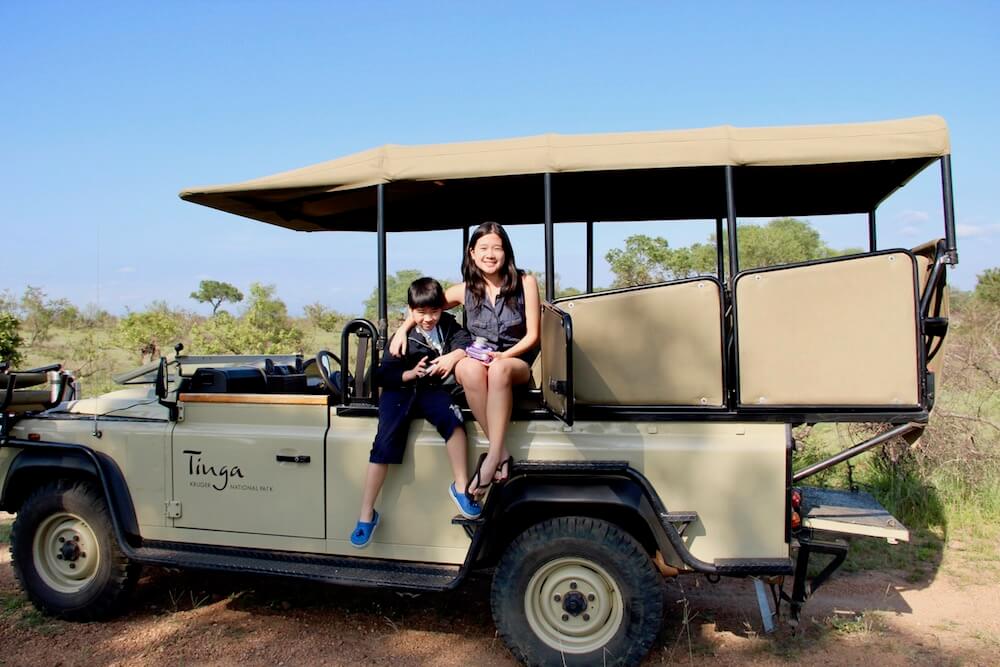
We travelled around in a comfortable open-air truck of sorts. Don’t worry, the animals are used to these trucks and aren’t threatened by their presence.
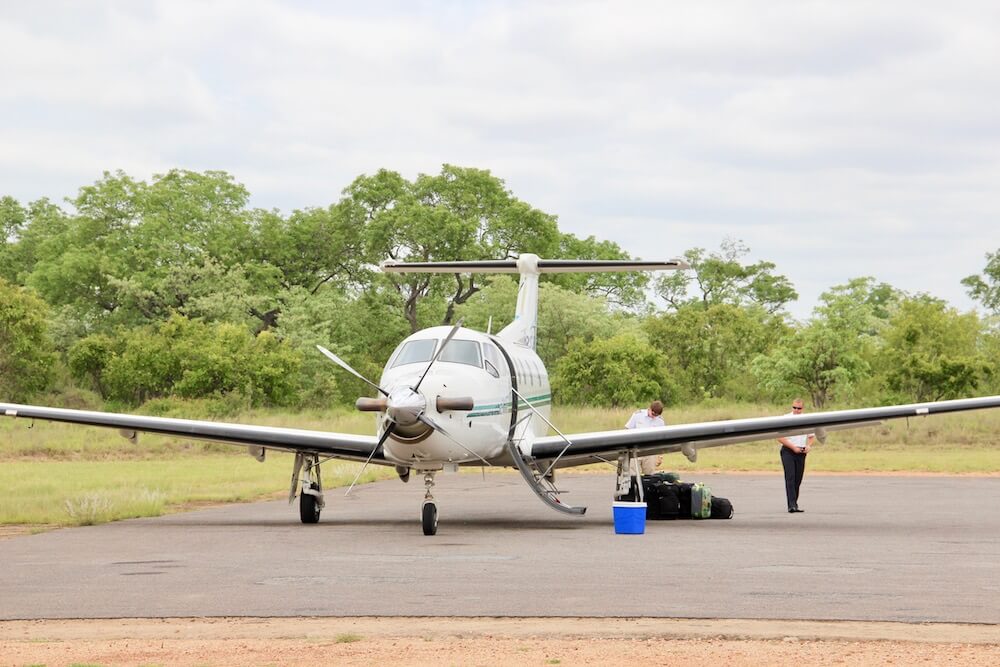
There are plenty of safari lodges in South Africa to choose from; I stayed at the Tinga Private Game Lodge (Legends Lodge) and the Sabi Sabi Bush Lodge, both of which are within the Kruger National Park.
Getting to the lodges was quite an experience in itself, where we took a small jet-propelled plane that could only fit about 10 people. It took us about 1.5 hours to reach Legends Lodge from Johannesburg via flight, and another 1 hour to reach Sabi Sabi Bush Lodge from Legends Lodge via car.
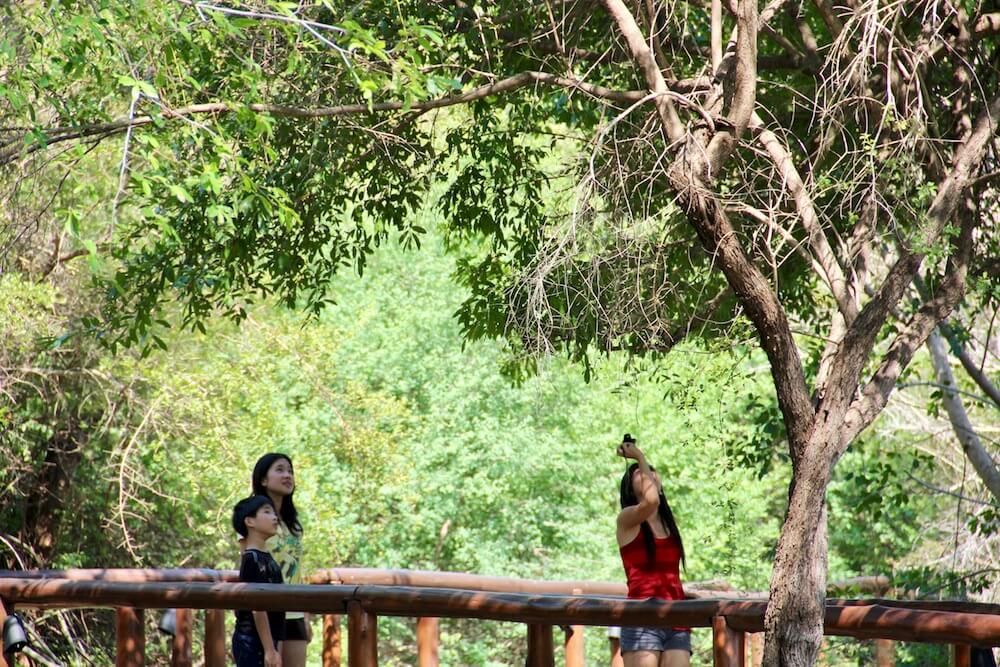
Every day, we had breakfast at 6am before departing for a game drive at 7.30am. Each game drive lasts for about 4 hours. After the morning game drive, we’ll return to the lodge for lunch. The afternoon was at leisure, where we could take a nap, read or simply enjoy the nature around us.
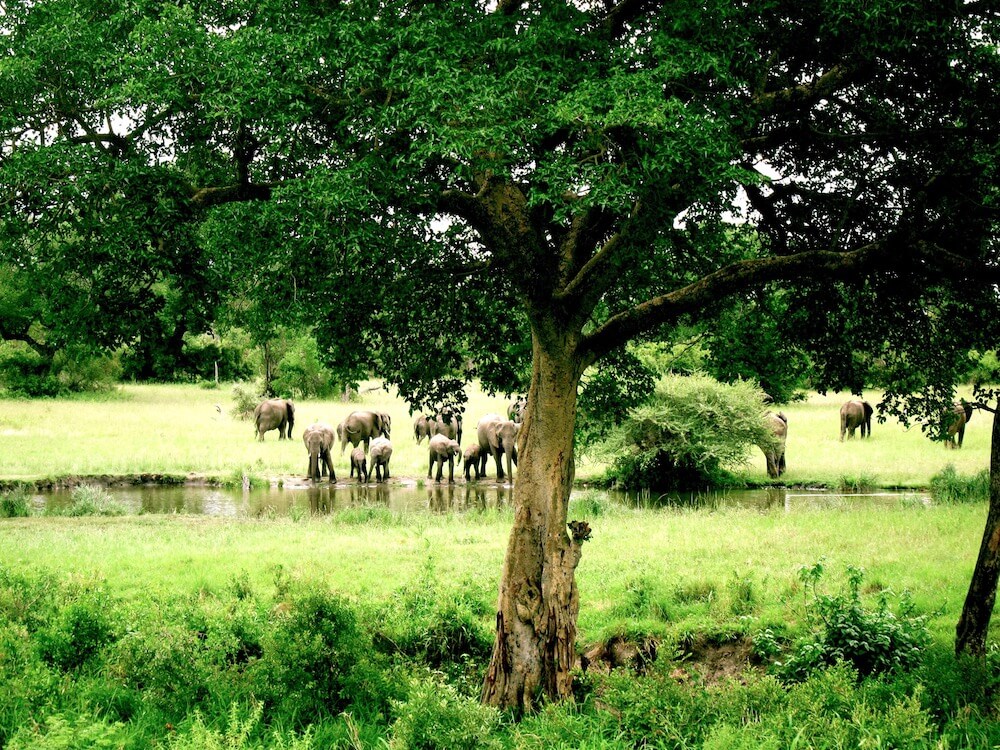
One of the lodges was even within visual distance of a large watering hole, where herds of elephants regularly came to have a drink.
At around 3.30 to 4pm, we’d depart for our 2nd game drive. After the drive, we’ll have dinner back at the lodge with the rest of the night at leisure.
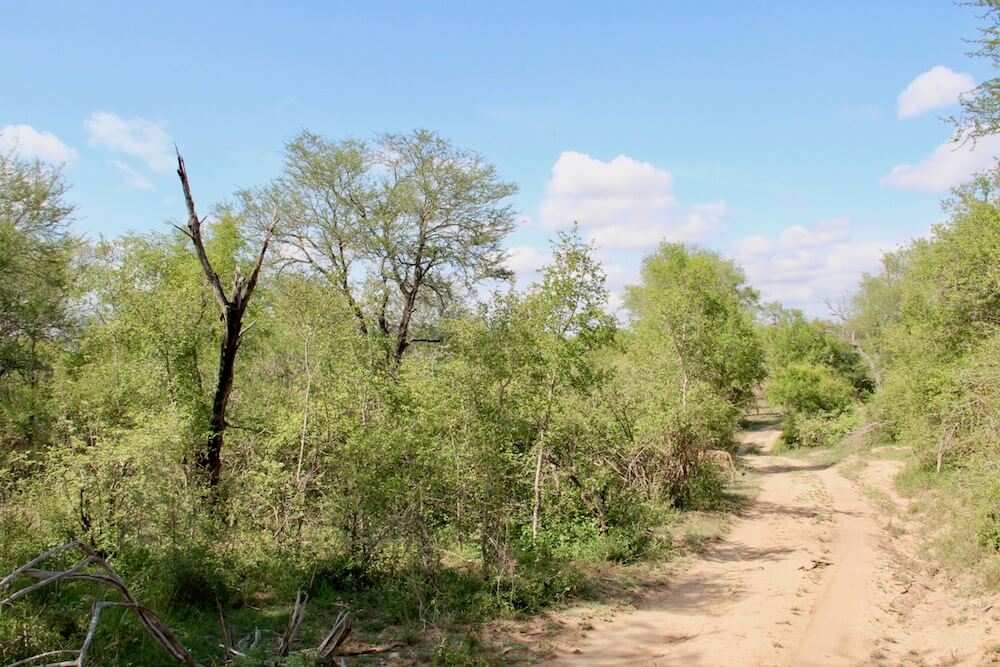
Going on safari in South Africa is truly like watching National Geographic come to life. However, what nobody really sees is what goes on behind the scenes in the making of a wildlife documentary, where minutes of scintillating action result from hours of patience, tenacity and more often than not, sheer luck.
Viewing these majestic animals in action is no different; each game drive requires you to drive around for 4 hours and, if you were lucky, you’d chance upon a couple lounging in the heat, half-hidden amongst the bushes. Most of the time, your view is just what is shown in the picture above! Despite all this, it’s the experience of driving around with bated breath – and how your heart skips a beat when an animal is spotted – that makes all that effort and time worth it.
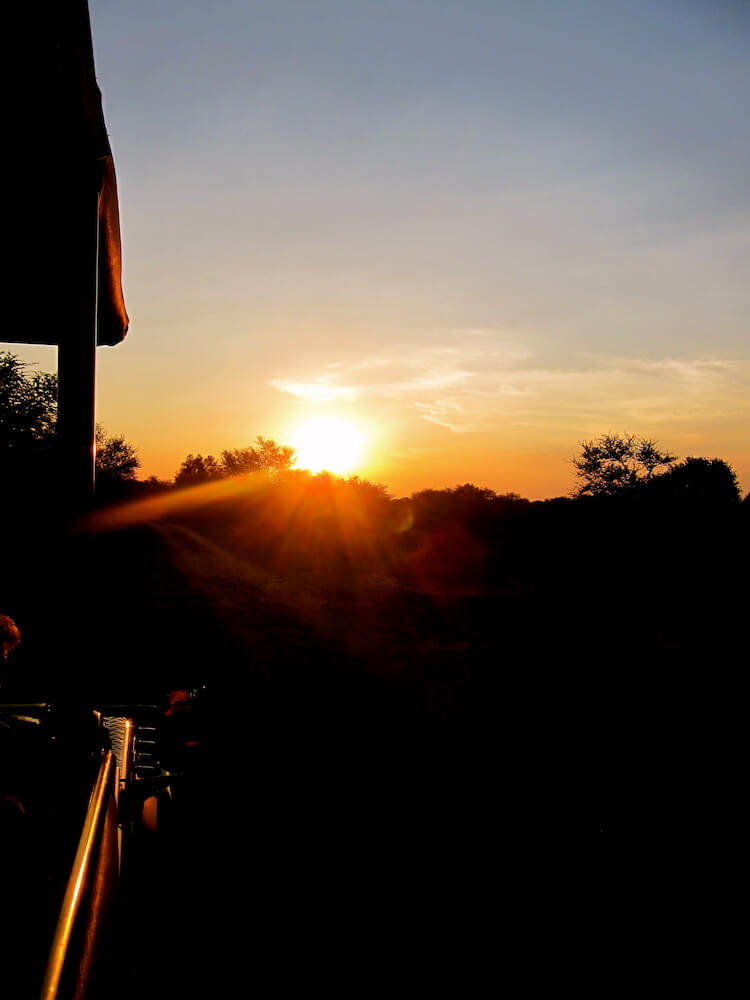
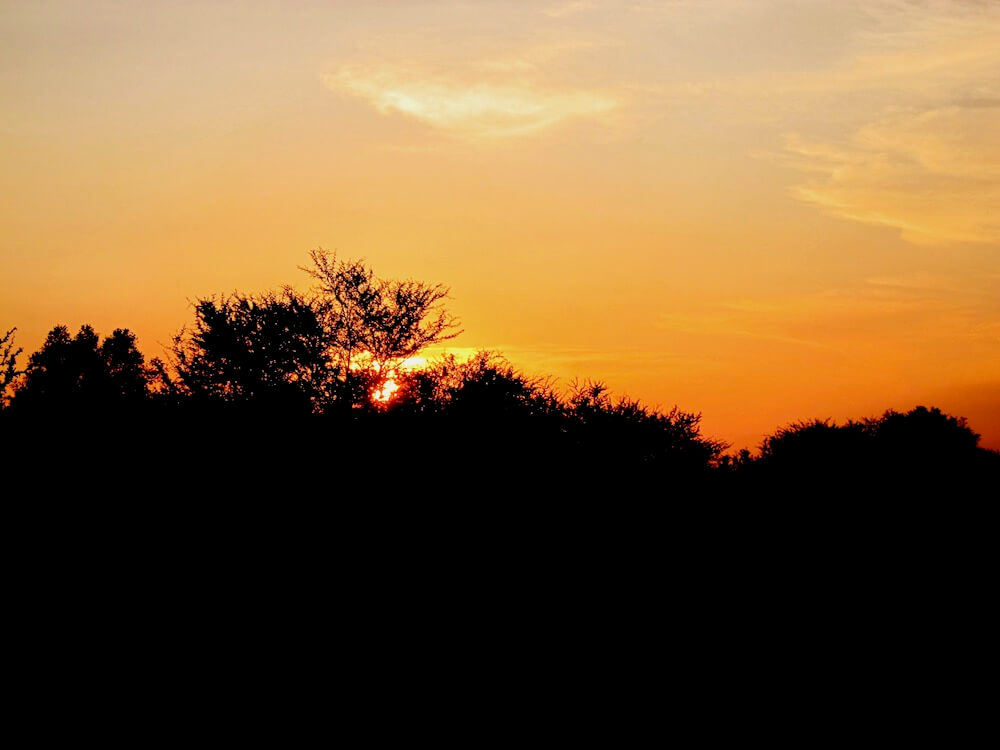
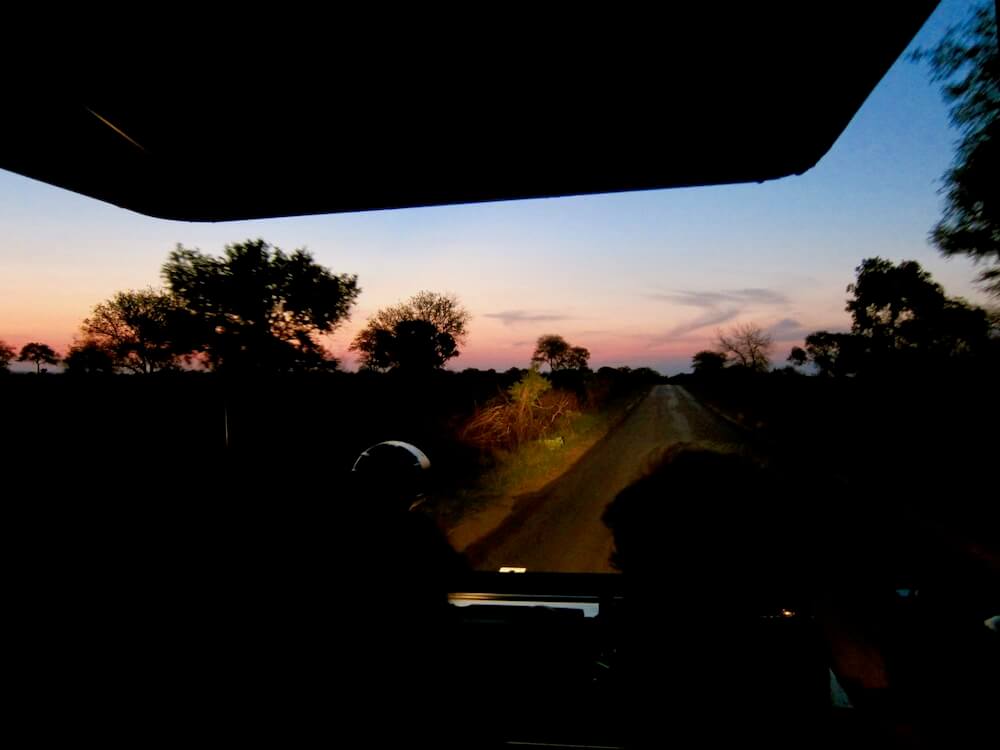
Plus, you’d get to experience some pretty amazing sunsets out in the savannah.
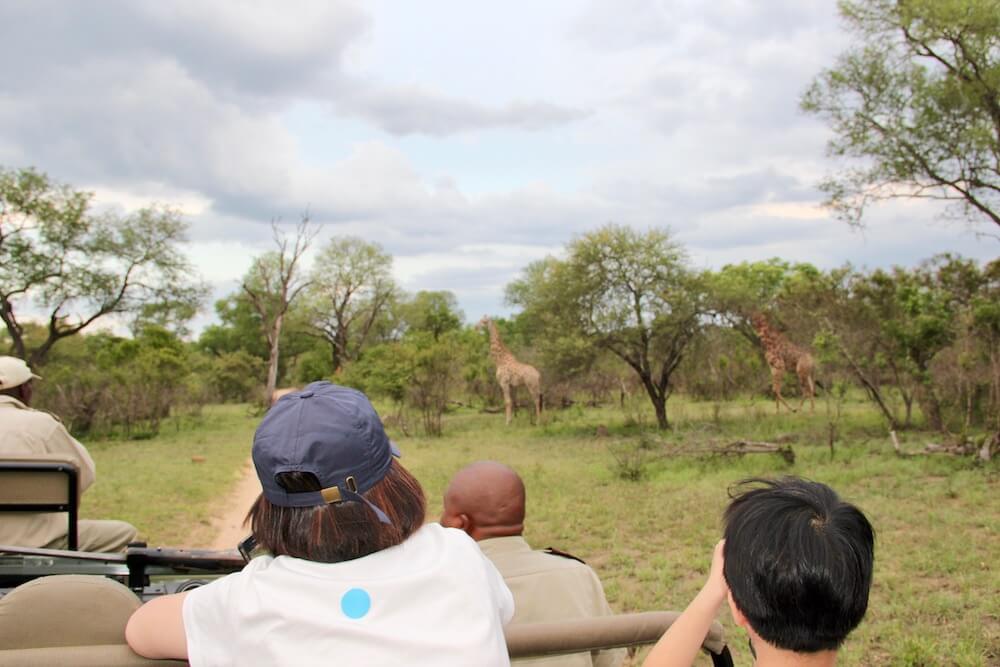
Would I recommend going on safari? In a heartbeat. And where better to experience one than in South Africa, the land where animals run wild and free?

0 Comments Add a Comment?